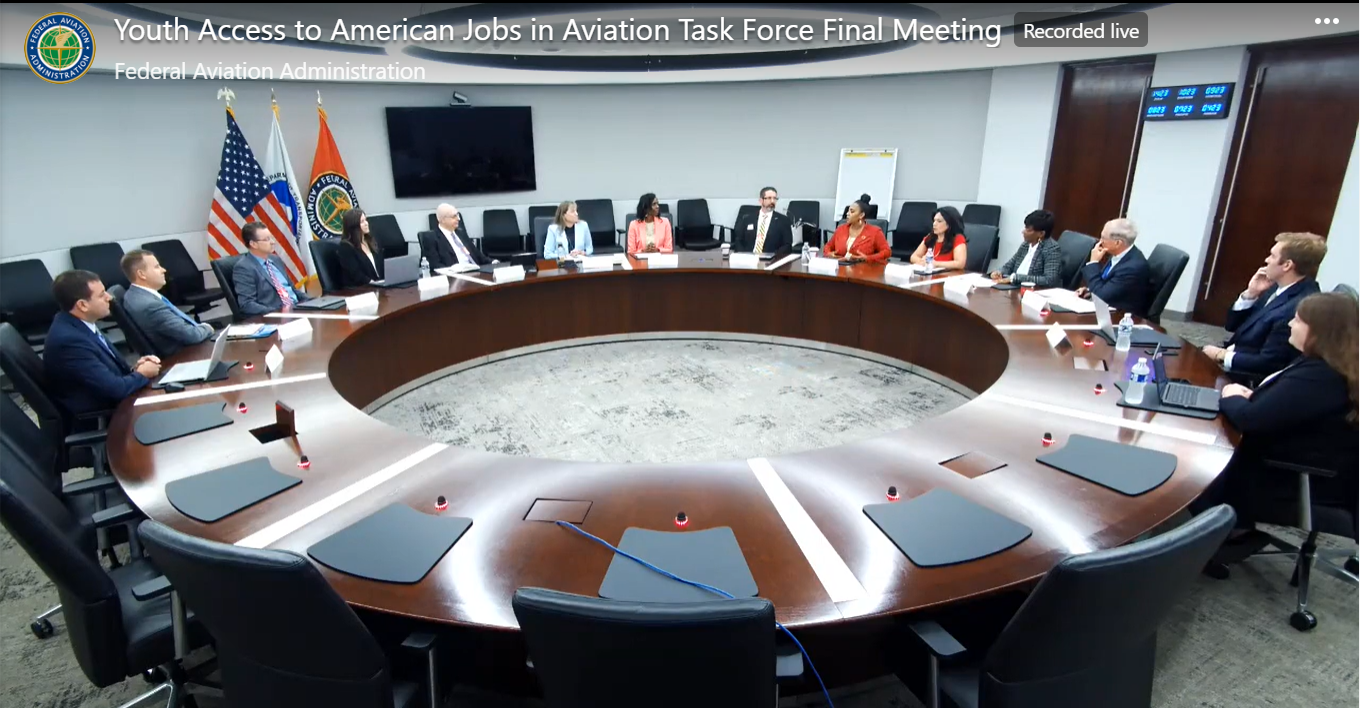
The Youth Access to Aviation Jobs in America Task Force Highlights Actionable Plan to Bring Underrepresented Groups to the Industry
The Youth Access to Aviation Jobs in America Task Force (YIATF), chaired by Vaughn College President Dr. Sharon DeVivo, voted on and submitted their final report to the Federal Aviation Administration on Friday, September 23. This National Task Force, comprised of 21 members, delivered 21 recommendations that seek to address the talent shortage in aviation and aerospace.
Task Force members came from across the country and brought a variety of viewpoints from industry, secondary education, workforce associations, training providers and colleges. Over the past two years, the group has talked to youth-serving organizations, industry, aviation journalists, researchers, museum executives and more to understand the programs and pathways that currently exist and how they could be scaled to expand the pipeline.
“The solution to solving the workforce crisis in aviation and aerospace is outreach to underrepresented groups,” said DeVivo. “Our Task Force recommendations are meant to create awareness, provide a central point of information on the web, connect that awareness to deeper engagement and financially support those young people (and the aviation education organizations that serve them) to pursue the needed training and higher education for a successful career in aviation and aerospace.”
The report suggests that there are two key times to reach young people—the first when they are 10 and the second when they are 18 years old. Between 10 and 18, there is also a connected and collaborative pathway that is needed to provide the incremental next steps. Throughout a young person’s journey, there is also a need to support the other influencers in that student’s life including parents/caregivers, teachers and guidance counselors. The Task Force makes a variety of actionable recommendations tied to supporting those groups with outreach, educational resources and a “one-stop shop” website that meets students, families and educators where they are with the information to make informed choices.
Providing significant funding to support these efforts is critical to the success of the report. Recommendations are included that assist both individual students with funding to achieve training and education, as well as a sustainable funding stream for youth-serving organizations who can devote more of their efforts to students instead of finding resources.
Central to these recommendations is communication. Communication, both regionally and nationally, will support this work going forward and determine if it is successful. The Task Force provides the outline of Regional Advisory Councils, tied to the FAA’s nine current regions. These Councils would consist of all those who are engaged in this work in a particular area of the country including: aviation youth organizations, training and higher education providers, aviation museums, secondary schools, industry and others. These groups would coordinate activities, share information and resources and provide input into the centralized website. The National Advisory Council, comprised of the chairs of the Regional Advisory Councils, would develop goals, measure implementation, and disseminate best practices across the country.
“Long-term, this Task Force believes we have presented a plan that is actionable, hopeful and speaks directly to bringing underrepresented groups to our exciting, innovative industry,” notes DeVivo. “As a leader of an institution that is recognized as the top college in the nation for moving students from the bottom percentages in income to the top, our students know first-hand the power of aviation and aerospace to transform a student’s, and their families, life. This report allows us to make that a reality for a much greater number of students.”